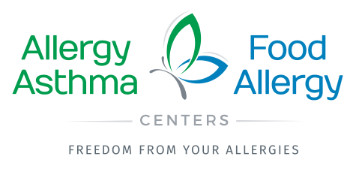Dear Allergy, Asthma & Food Allergy Centers Patients and Families,
Our professional societies released COVID-19 Pandemic Contingency Planning for Allergy and Immunology on Tuesday, March 17, 2020. We are implementing these guidelines in order to continue providing essential medical care for our patients while keeping our community safe. As the virus spreads through our community, social distancing remains one of the centerpieces of prevention. Therefore, we are looking to minimize the amount of time patients may have to spend outside the home and are instituting the following:
- All food challenges and oral immunotherapy (OIT) new starts currently scheduled through April 3, 2020, will be rescheduled. Our staff will be contacting families regarding this, so there is no need to call our office at this time.
- All OIT dose escalations (updosing) currently scheduled through April 3, 2020, will need to be rescheduled. Our staff will be contacting families regarding this, so there is no need to call our office at this time. However, if you need more capsules, please make sure to inform the staff member who calls.
- Patients currently on allergy shots may continue to receive their injections. However, if you have been building up once weekly, you may start coming every 2 weeks for your buildup phase. If you are currently on maintenance dosing receiving injections every 2 or every 3 weeks, you may increase your interval to every 4 weeks. In the spirit of social distancing, if you have flexibility, please try to avoid any peak times to minimize the number of people in the waiting room. We have decreased the seating capacity in the waiting room. However, if you are uncomfortable coming into the office, you may skip injections during this period of social distancing.
- If you are on biologic injections (ex. Xolair, Nucala, Fasensra), you should keep your appointment as long as you are not acutely ill with any type of infection.
- Anyone who is currently scheduled for a new patient office visit through April 3, 2020, will have the option of converting the in person office visit to a telemedicine visit or rescheduling the in person visit to a later date. The cost for the telemedicine visit will be $200 for the new patient appointment. We will collect payment at the time of service. Please contact your insurance company to see about reimbursement for your out of pocket costs.
- Anyone who is currently scheduled for a follow up visit through April 3, 2020, will also have the option of converting the in person office visit to a telemedicine visit or rescheduling the in person visit to a later date. The cost will be $50-$100 out of pocket depending on the complexity and duration of the telemedicine visit. This amount may be less than an in person office visit copay for some patients depending on their insurance.
- If you are having acute environmental allergy or asthma symptoms, please contact the office to schedule an acute telemedicine visit with one of our providers.
- If you are ill with fever, cough, and shortness of breath, have any possible COVID-19 exposures, or have traveled (domestic or international) in the past 2 weeks, please do not come to the office. If you suspect you need testing, please check with the following screening resources:
- MO hotline: 877.435.8411
- IL hotline: 800.889.3931
- Mercy screening: 314.251.0500
- SSM Virtual screening: www.ssmhealth.com
For more information regarding COVID-19, please see the CDC website: http://bit.ly/CDC-COVID-19_info
We as a practice will continue to follow the precautionary measures recommended by the CDC and our professional societies to keep our office as safe as possible for our patients, families, and staff. Please continue to monitor our Facebook page for updates. Thank you for your understanding and continuing to partner with us to improve health outcomes. Working together in our local community and as a nation, we will overcome this crisis. Stay safe and healthy.

